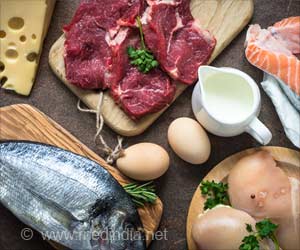Labeling foods with physical activity needed to burn calories is associated with healthier choices, found new study.

‘Physical activity calorie equivalent or expenditure (PACE) food labelling aims to show how many minutes or miles of physical activity are needed to burn off the calories in a particular food or drink.’





If widely applied, it might, on average, shave off up to 195 calories per person per day, they calculate. For example, eating 229 calories in a small bar of milk chocolate would require about 42 minutes of walking or 22 minutes of running to burn these off.
The UK Royal Society for Public Health has already called for PACE labelling to replace the current system, but to date, there's been little strong evidence to back this stance.
The researchers trawled research databases and other relevant online resources for studies that compared PACE labelling with other types of food labelling or none for potential impact on the selection, purchase, or consumption of food and drinks (excluding alcohol).
They found 15 relevant randomised controlled trials, and pooled the data from 14 of them. The results showed that when PACE labelling was displayed on food and drink items and on menus, on average, significantly fewer calories--65 fewer per meal--were selected.
Advertisement
Based on their findings, and average consumption of three meals a day plus two snacks, the researchers suggest that PACE labelling might potentially slice around 200 calories off daily intake.
Advertisement
Nevertheless, they suggest: "PACE labelling shows some promise in reducing the number of kilocalories (calories) selected from menus, as well as the number of calories and the amount of food (grams) consumed."
The evidence shows that even a relatively small reduction in daily calorie intake (100) combined with a sustained increase in physical activity is likely to be good for health and could help curb obesity at the population level: PACE labelling may help people achieve this, they say.
"PACE labelling is a simple strategy that could be easily included on food/beverage packaging by manufacturers, on shelving price labels in supermarkets, and/or in menus in restaurants/fast-food outlets," they write.
"Public health agencies may want to consider the possibility of including policies to promote [it] as a strategy that contributes to the prevention and treatment of obesity and related diseases," they conclude.
Source-Eurekalert















